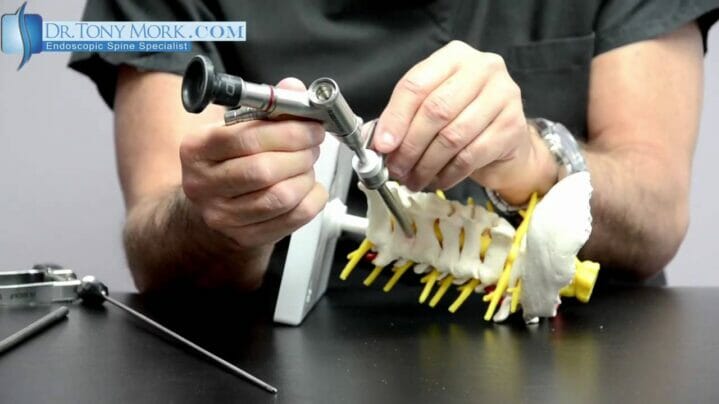We have discussed the symptoms or things that you feel in your neck, shoulders, arms and hands when you have cervical foraminal stenosis, so let’s talk about the major causes of cervical foraminal stenosis.
Recall that the foraminal canal is the tubular passage that allows passage of nerves from the central spinal canal (spinal cord) out to their respective distributions to the muscles, skin, tendons etc. The nerve passing out of the canal is referred to as “exiting” nerve root.
These nerves control both sensation and motor function and each nerve is like an electrical wire that supplies a distinct portion of the body. Foraminal stenosis is a narrowing effect that occurs in the canal. The effect of narrowing in the foraminal canal is like a circuit breaker that controls the lights in certain rooms of your house, so too much narrowing will shut off the nerve function.
So when we talk about causes of cervical foraminal stenosis, we are really talking about the dimensions or diameter of the tunnel. So what influences the diameter of the foraminal canal?
The Various Causes of Cervical Foraminal Stenosis
One contributor to cervical foraminal stenosis is degenerative facet disease, as the facet joint forms the back (posterior) wall of the foraminal canal. Anything that causes enlargement of the facet joint will naturally intrude into the foraminal canal and thus compete for space with the nerve root passing through this tunnel on its way out to the shoulder, arm, or hand.
Degeneration of the facet joint is characterized by loss of cartilage from the (articular) joint surface. Loss of the cartilage results in degenerative changes that include hypertrophy that means overgrowth or enlargement. These enlargements are sometimes referred to as osteophytes or spurs, and it is the presence of these spurs that can push against a nerve that would normally be passing through a smooth tunnel (foraminal canal) without pressure points.
If we have a degenerated facet joint that is inflamed, it can give rise to two types of pain. One pain is local from joint inflammation and irritation of soft tissues giving rise to local pain in the back of the neck called facet syndrome. The other pain from a degenerated facet is caused by its enlargement and compression of a nerve that is on the way to the shoulder, arm, forearm, or hand.
The Second Cause
A second cause of foraminal stenosis is a disc herniation into the foraminal canal that competes for space with the nerve root. In this scenario, the nerve always looses. This is because the walls of the foraminal canal or tunnel are from the facet joint and the disc.
Think of the disc between the vertebrae like the filling of an Oreo cookie. Now imagine applying some pressure to the cookie and watching the filling start to push outward beyond the edges of the cookie. This is essentially what happens when a disc herniates. It protrudes beyond its normal borders, and in this case, into the foraminal canal. Since the foraminal canal is an enclosed space, the disc that herniates into the foraminal canal takes away space from the nerve, thus causing pain, numbness, or weakness.
The Third Cause
A third cause of foraminal stenosis is secondary to degenerative disc disease where there is collapse of the disc space. When the disc space collapses the walls of the foraminal canal also collapses, so that the diameter of the tunnel is decreased as well.
The Fourth Cause
A fourth cause of foraminal stenosis is degenerative changes of the uncinate process, which is a joint between the vertebral bodies. This joint can contribute to part of the wall of the foraminal canal. If the joint enlarges because of degenerative changes, it can take up space that the nerve needs to remain healthy. The health of the nerve is dependent on the circulation or blood supply, if there is pressure on the nerve for any reason, symptoms may begin to occur.
https://backpainreliefinstitute.com/conditions/foraminal-stenosis/cervical-foraminal-stenosis-diagnosis/
